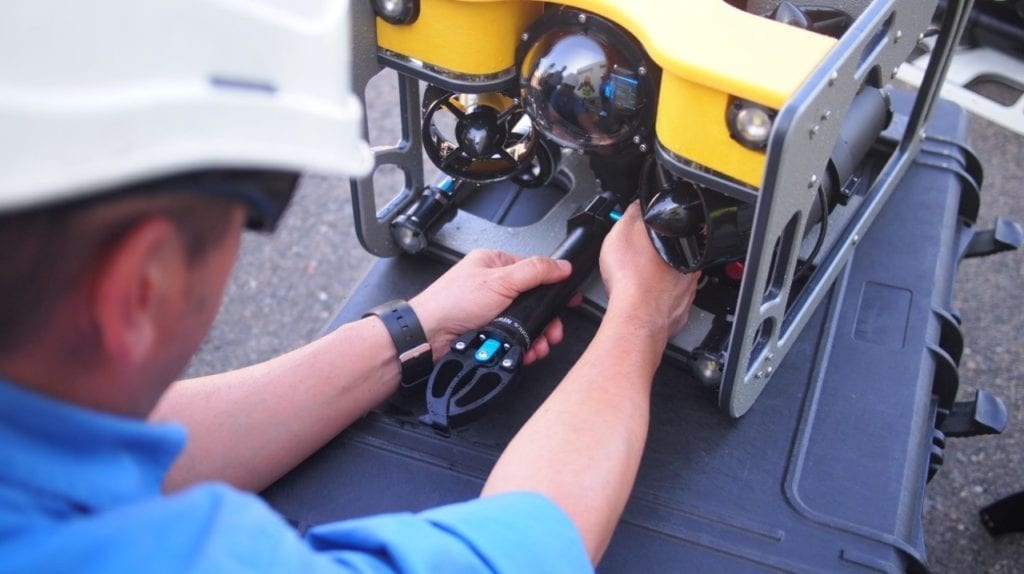Spain's largest electric utility Endesa has successfully tested a new remotely operated vehicle (ROV) that it says will make inspection and maintenance in fully or partially submerged environments at its thermal power plants less costly and more efficient.
The underwater robot, which was custom manufactured by Spanish startup NIDO Robotics for Endesa's applications, is about a foot wide and long and two-feet-high and weighs about 30 pounds can be operated remotely at a depth of a 1,000 feet. Endesa said in October it had tested the ROV at three different power plants: the coal-fired Carboneras coal-fired thermal plant in Almería; at the San Adrián del Besós combined cycle gas plant in Barcelona; and in the Melilla diesel power station, which is located in the Spanish autonomous city on the north coast of Africa.

A technician handles Endesa's underwater robot, which the company says has been tested for various applications in fully or partially submerged applications at coal, gas, and diesel power plants. The robot is piloted using virtual reality glasses. Courtesy: Endesa
As well as taking images, the ROV "carried out cleaning work on metal elements through cavitation and has taken samples of water and mud, among other activities," Endesa told POWER. "The vehicle has a robotic arm that allows objects found on the seabed to be handled and transported. It is also equipped with a dredging system to clean and extract mud in basins, tanks and pipes."
Tests mainly focused on demonstrating the ROV's ease of operation and handling. However, the imaging quality have already proven a "significant help" in planned or special inspections. Another benefit is that other systems, such as positioning, measurement of water properties, and bathymetric survey, "allow for the regular monitoring of the boundary and environmental conditions in the power stations," Endesa said. Those inputs make it possible, for example, to "assess the sedimentation of materials in hoppers or similar containers or to analyse the evolution of temperatures in a similar system, among other functions. With all of these parameters, maintenance plans can be optimised in the plants to adapt them to actual needs," it explained.
Endesa has also used the ROV in cooling towers and tower basins to inspect wall condition and look for fallen materials and plant matter. Other applications include to inspect water outlets and pumps; to monitor pH, temperatures, and oxygens in lakes and leachate basins; and monitor cracks in wells, canals, water pipes, dams, and tanks.
But for Endesa, the ROV's primary benefit is to minimize occupational risks for staff or contractors, which have to go underwater to carry out inspection or maintenance. "This initiative is yet another example of Endesa's commitment to the digitalisation of processes, in line with the strategy followed by the Enel Group." Among the company's other digitalization efforts are demonstrations of predictive maintenance tools at its Besós combined cycle plant; a project to develop a temperature measurement system in boiler components using fiber optics as a direct application sensor; and a pilot project to introduce an artificial intelligence and cognitive model-based assistance system to the operation.
–Sonal Patel is a POWER senior associate editor (@sonalcpatel, @POWERmagazine)
